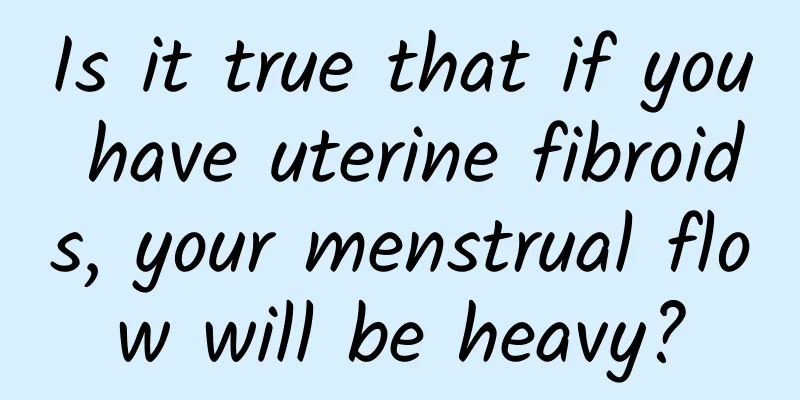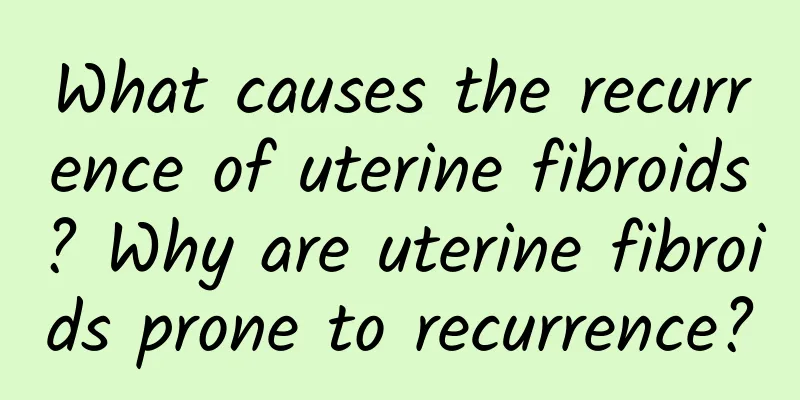What are the symptoms of cervical hypertrophy?

|
Cervical hypertrophy is not unfamiliar to female friends. It is one of the more common gynecological diseases. Many friends are concerned about the symptoms of cervical hypertrophy. In order to clear up everyone’s doubts, we will introduce them to you below. So, what are the symptoms of cervical hypertrophy? The surface of the enlarged cervix may also be damaged or irritated by inflammation, causing squamous epithelial shedding and columnar epithelial hyperplasia, which may lead to erosion. After the inflammation is treated, the local congestion and edema of the cervix subsides, and the surface of the cervix is covered with squamous epithelium again, returning to a smooth state. The specific answers to the symptoms of cervical hypertrophy are as follows: 1. Slight erosion occurs. When the condition is more serious, the surface of the enlarged cervix will also have squamous epithelial shedding and columnar epithelial hyperplasia due to injury or inflammatory stimulation, thus generating slight erosion. However, after treatment, the surface of the cervix will be covered with squamous epithelium again and return to its smooth appearance. 2. Increased leucorrhea. For patients with cervical hypertrophy, increased leucorrhea is common and one of the main symptoms. In acute inflammation, leucorrhea is often purulent, accompanied by lower abdominal pain, frequent urination, urgency, and pain. When inflammation turns chronic, leucorrhea is often milky white mucous or yellow purulent. 3. Patients with cervical hypertrophy have no systemic signs. If the inflammation is mild, the patient will have no obvious symptoms. However, when the inflammation spreads along the uterosacral ligament to the pelvic cavity, there will be lumbar pain, lower abdominal distension and dysmenorrhea, which will occur together and will be aggravated during bowel movements or sexual intercourse. 4. Cervical hypertrophy and erosion are integrated. Sometimes, patients with acute inflammation may have cervical congestion, edema or erosion, and purulent secretions are discharged from the cervical canal, and there will be pain when the cervix is touched. Children with chronic cervicitis can see different degrees of cervical erosion, hypertrophy, polyps, glandular cysts, etc. These are the detailed answers to the symptoms of cervical hypertrophy. I hope these introductions are helpful to everyone. If you have any questions, please feel free to consult our online experts. |
<<: Focus on how to treat cervical hypertrophy
>>: Let everyone know about cervical hypertrophy
Recommend
What are the symptoms of uterine fibroids? What are the symptoms of uterine polyps?
Uterine fibroids and uterine polyps are common gy...
What medicine is most effective for women with irregular menstruation? What should women with irregular menstruation eat?
What medicine is most effective for irregular men...
What care should patients with Bartholinitis pay attention to?
Bartholinitis is a common disease in life. Knowin...
Is Air Force breakfast bad? Nutritionist: The blacklist of obesity landmines is…
According to media reports, a volunteer air force...
The main symptoms of bacterial vaginosis
The main symptoms of bacterial vaginosis include ...
Do uterine fibroids affect pregnancy? Can uterine fibroids cause infertility?
In recent years, due to the high incidence of ute...
Endometrial polyps grow fast, what's going on?
The rapid growth of endometrial polyps may be cau...
How to quickly relieve vulvar itching
How to quickly relieve vulvar itching? Vulvar itc...
Vaginal bleeding after abortion
Vaginal bleeding half a month after abortion may ...
Predisposing factors for acute pelvic inflammatory disease
Acute pelvic inflammatory disease is more common ...
What kind of examinations should be done before abortion? Can abortion be done on the same day when going to the hospital?
Abortion is a common gynecological procedure used...
What are the symptoms of cervicitis
Cervicitis is inflammation of the cervix. Common ...
How much does left ovarian cyst surgery cost?
How much does left ovarian cyst surgery cost? 1. ...
Pelvic inflammatory disease may be related to your age
Pelvic inflammatory disease is related to your ag...
What elements are missing from abnormal vaginal discharge?
Abnormal leucorrhea may be related to the lack of...









